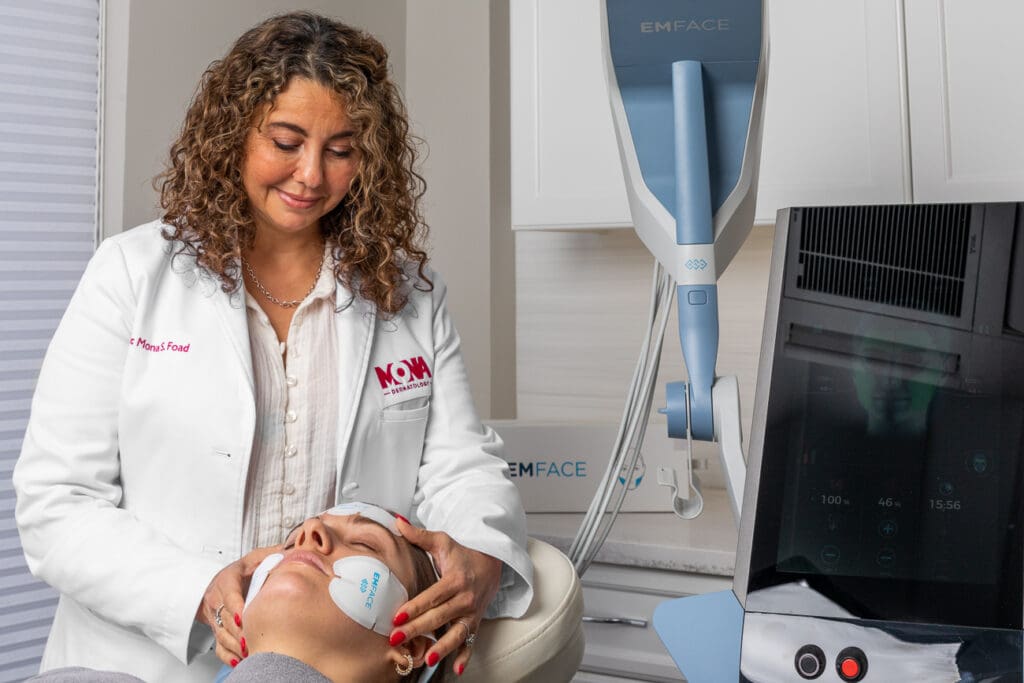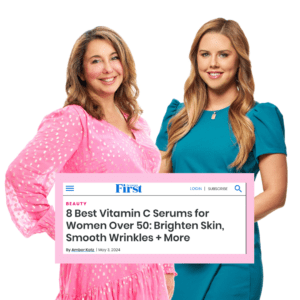How to Get Rid of Scalp Acne? | Featured In First For Women
Dr. Alexandra Bowles expands upon her insights on scalp acne from her recent First For Women feature: How to Get Rid of Scalp Acne According to Top Dermatologists.

What is scalp acne?
Scalp acne is an informal term used to describe small pimples or bumps that appear on the scalp. In some cases, this is not technically true acne. Scalp acne, also known as scalp folliculitis, is a condition characterized by small, inflamed bumps on the scalp. These bumps often look similar to acne lesions on the face and body. Folliculitis is typically caused by inflammation or infection of the hair follicles. This is due to factors such as excess oil production, bacteria, yeast, or other irritants.
Scalp acne can be relatively common in both men and women, but several factors contribute to its development in women. Hormonal fluctuations, stress, certain medications, hair care products, and underlying skin conditions can cause scalp acne in women. Additionally, women may be more prone to hormonal fluctuations due to menstrual cycles, pregnancy, or menopause. These hormonal fluctuations could potentially influence the frequency and severity of scalp acne outbreaks.
What is folliculitis?
Folliculitis is an inflammation or infection of the hair follicles. It typically appears as small red or white bumps surrounded by redness. It sometimes also forms with a central area containing purulent fluid. In more severe cases, folliculitis can lead to larger, painful lesions or cysts. While sunburn itself doesn’t typically cause folliculitis directly, sunburned skin can be more vulnerable to infection and may contribute to the development of folliculitis. Similarly, excessive sweating can create a warm, moist environment that promotes bacterial or fungal growth, increasing the risk of folliculitis in affected areas.
What exactly is dandruff?
Seborrheic dermatitis, more commonly known as “dandruff,” is a common scalp condition characterized by flaking of the skin on the scalp. It typically appears as a formation of visible white or yellowish flakes. Dandruff can be caused by Malassezia fungus. This fungus is naturally present on the scalp and feeds on the oils produced by hair follicles. An overgrowth of Malassezia can lead to irritation and inflammation of the scalp, resulting in greasy yellow or white scales. These scales are what we commonly refer to as dandruff. Dandruff is not a form of acne.
Inflammation of the hair follicles does not typically cause dandruff. Instead, scalp flaking is the primary cause. Wearing hats can potentially worsen dandruff in some cases. Tight-fitting hats or helmets can trap heat and moisture against the scalp, creating an environment that is conducive to the growth of Malassezia fungus.
What is acne mechanica?
Acne mechanica is a form of acne that is caused by friction, pressure, or heat against the skin. It typically occurs in areas where there is repeated physical contact or irritation, such as the face, shoulders, or back. Acne mechanica is not usually caused by the same factors as traditional acne (such as excess oil production and bacteria), but rather by external factors that disrupt the skin barrier and lead to inflammation. Acne mechanica can appear as small, red bumps, pustules, or papules on the skin. It may resemble traditional acne, but it arises primarily from physical irritation rather than hormonal imbalances or bacterial presence on the skin. Tight clothing, backpack straps, sports gear, and other sources of friction or pressure on the skin are typical triggers for this condition.
How common is scalp skin cancer caused by the sun?
Skin cancer of the scalp caused by sun exposure is relatively common, particularly in individuals with fair skin or a history of extensive sun exposure. The most common type of skin cancers affecting the scalp are basal cell carcinoma (BCC) and squamous cell carcinoma (SCC). While melanoma can develop on the scalp, it’s not as prevalent as non-melanoma skin cancers such as BCC and SCC in this area. Areas exposed to the sun like the face, neck, arms and legs are commonly associated with melanoma. However, it can occur anywhere on the body, including the scalp.When melanoma develops on the scalp, it may present as an irregularly shaped mole or lesion that is asymmetrical, has uneven borders, exhibits various colors, and may change in size or appearance over time. It’s very important to protect your scalp from the sun whether that is with sunscreen or wearing hats.










